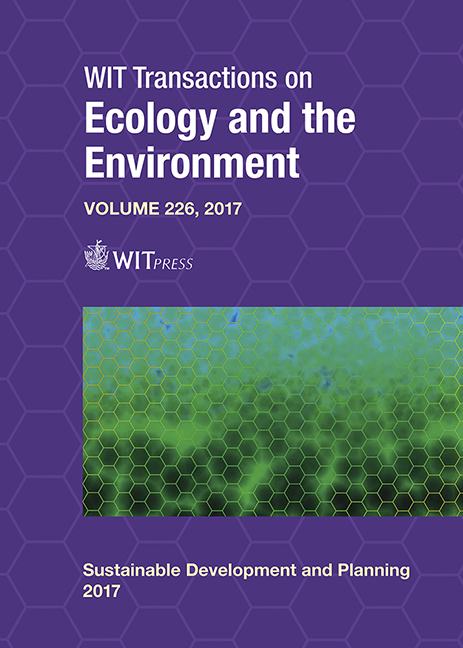EVALUATING MORPHOLOGICAL CHANGES OF HOUSEHOLD ENVIRONMENT: A CASE STUDY OF MIGRATION IN MOHAKHALI, DHAKA, BANGLADESH
Price
Free (open access)
Transaction
Volume
226
Pages
12
Page Range
195 - 206
Published
2017
Size
942 kb
Paper DOI
10.2495/SDP170171
Copyright
WIT Press
Author(s)
NANDINI AWAL, MOHAMMAD HABIB REZA
Abstract
Urbanization and migration is accelerating all over the world. Cities are becoming megacities in most developing countries with unwanted, unsolved and unimaginable identities. Dhaka is one of the fastest growing megacities, developing as an example of urban agglomeration where the growth rate is much higher than expected. Decentralization forces a large number of people from all over the country to migrate to Dhaka for a better opportunity. This huge wave is creating unprecedented pressure on urban infrastructure, most notably on housing. As a result, the basic human need for civilized living has become a complicated problem for the city dwellers, particularly the middle-middle and lower-middle income groups. With few exceptions, many of them have little choice of finding accommodation in close proximity of their necessities, which leads them to choose an accommodation with unwanted limitations. However, evidence show that the urban migrants can adjust with and transform their household environment by themselves according to their demand. In case of middle-middle and lower-middle income groups, dwellers transform their living environment over time and follow a particular process in sequential order to adopt these changes. This paper examines selected areas of Dhaka city and explores aspects and ideas for affordable housing solutions by users. Furthermore, socio-cultural and spatial analyses reveals the ways the housing environment is developing and the adaptation patterns of dwellers. In addition, the study shows that migrants from inside the city and outside the city play different roles in the transformation and adaptation processes.
Keywords
urbanization, migration, Bangladesh, Dhaka city, Mohakhali area, migrant dwellers, household environment, middle-middle and lower-middle income groups





